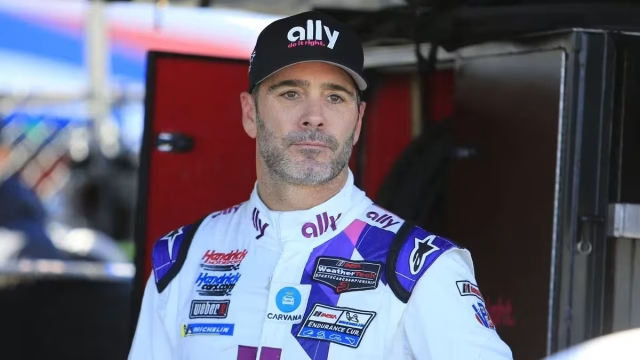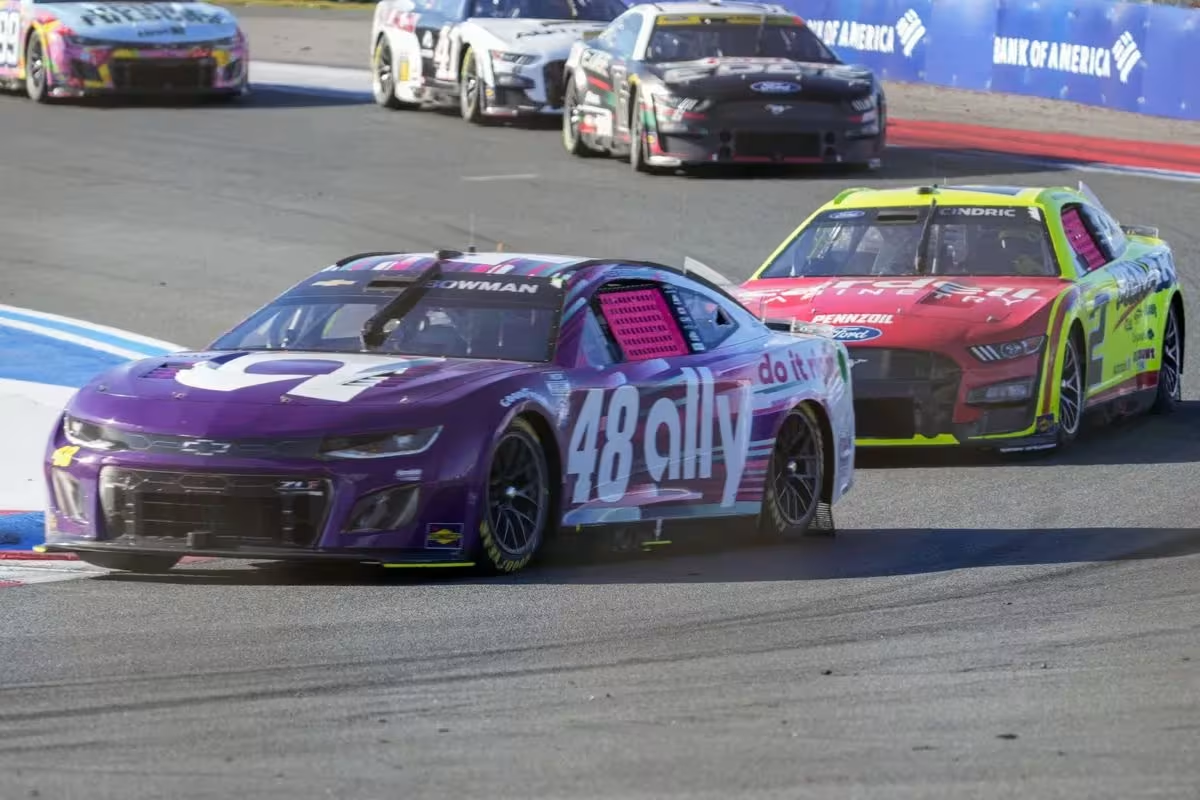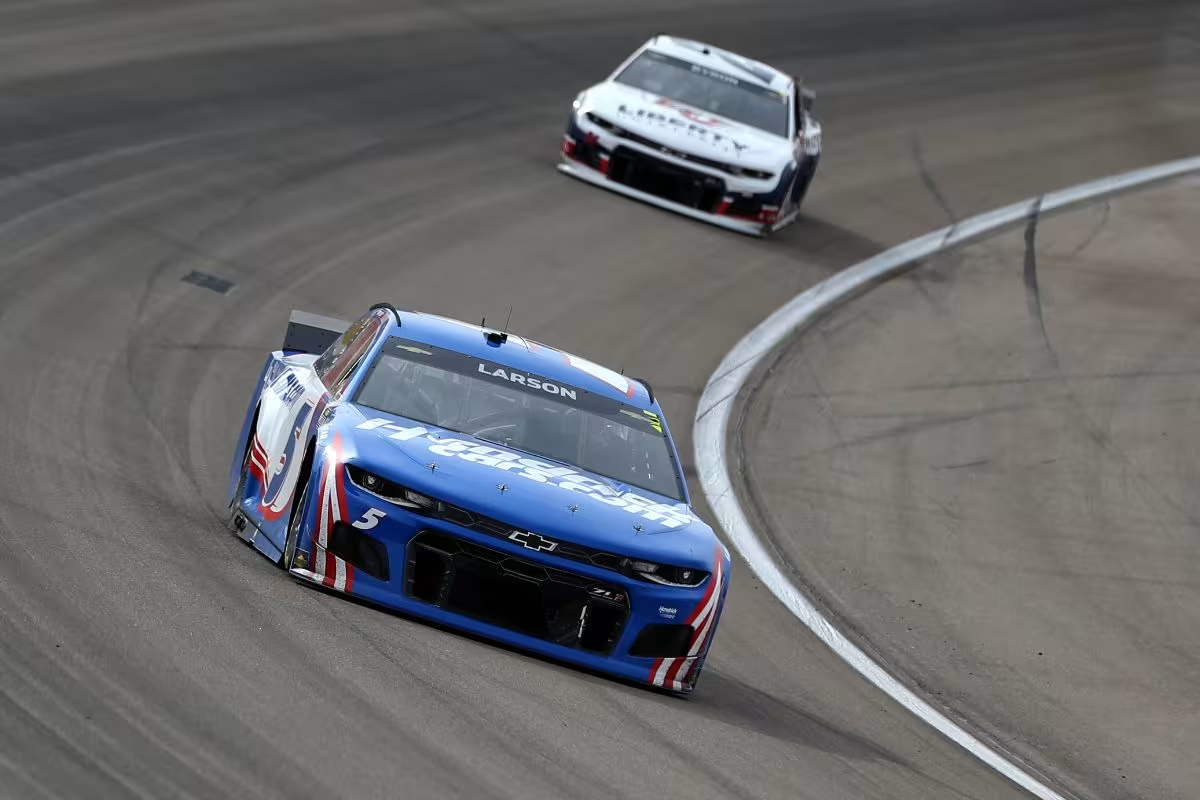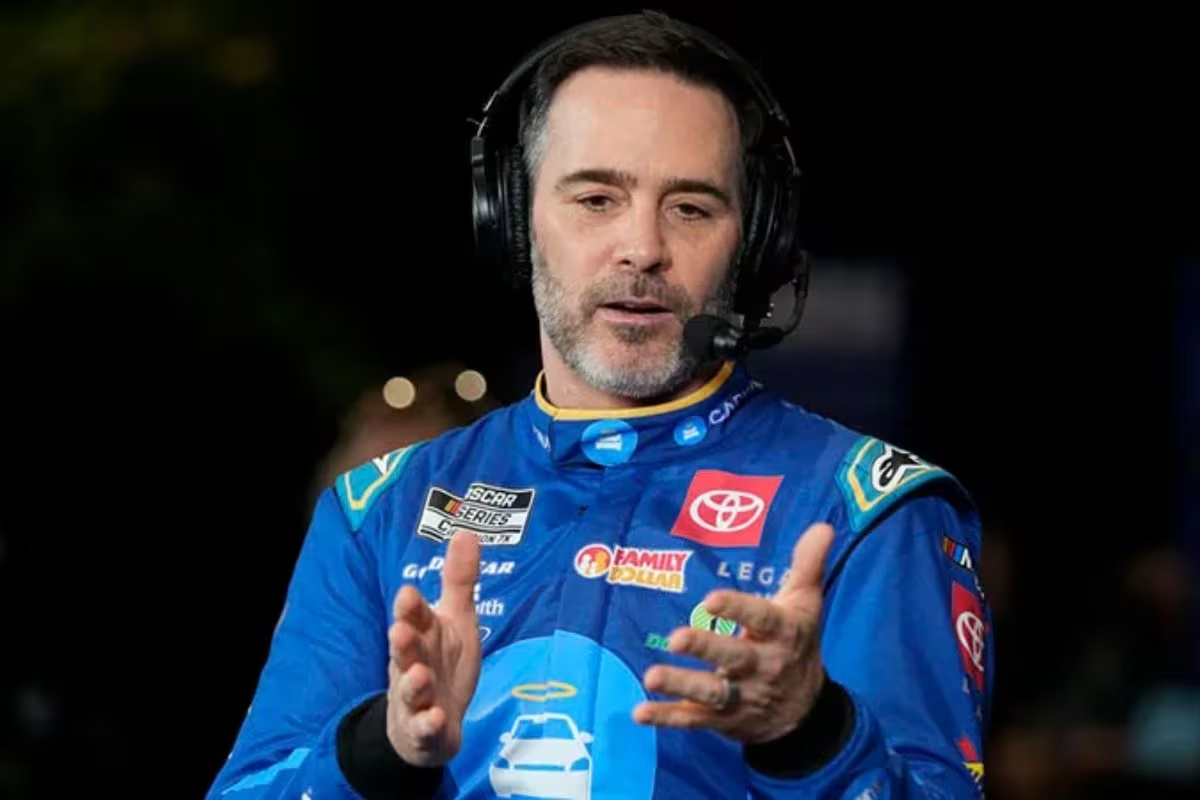Jimmie Johnson‘s scandalous pit crew swap at Texas Motor Speedway in 2010 stirred up a lot of drama in NASCAR, showing how tricky it can be to balance teamwork and competition. This bold move was designed to improve Jimmie Johnson’s chances of winning the championship, but it raised serious questions about loyalty and the fairness of using resources. Driven by Steve Letarte and later backed by Chad Knaus, this decision highlighted how important trust and relationships are within Hendrick Motorsports. While the swap led to great success on the track, it also made fans wonder about integrity in the sport.
Key Highlights
- The 2010 pit crew swap at Hendrick Motorsports raised ethical concerns about loyalty and competition among NASCAR drivers, particularly affecting Jeff Gordon and Jimmie Johnson.
- Chad Knaus’s decision to make the pit crew swap permanent highlighted the manipulation of resources for performance in NASCAR, sparking debates over fairness in the sport.
- The collaboration between the #24 and #48 NASCAR teams showed the blurred lines of teamwork but also resulted in feelings of betrayal among team members.
- Critics argued that the swap undermined the competitive spirit of NASCAR, presenting it as a “cheap trick” to secure championships for Johnson.
- Ultimately, the pit crew exchange shifted perceptions of teamwork in NASCAR, emphasizing the importance of trust and communication while raising questions about individual achievements.
Secret Alliances in NASCAR: Dale Earnhardt and Jeff Gordon’s Crew Collaboration
In the competitive sphere of NASCAR, where rivalries often dominate the narrative, the emergence of secret alliances can reveal a more nuanced layer to the sport’s dynamics. One of the most intriguing examples of such a partnership unfolded between Dale Earnhardt’s #3 and Jeff Gordon’s #24 NASCAR teams. Although these iconic drivers were fierce competitors on the track, their respective crew chiefs, Ray Evernham and Andy Petree, orchestrated a covert collaboration that defied the conventional expectations of rivalry in NASCAR.
This alliance was not merely a tactical maneuver but a tactical necessity within NASCAR. By maintaining a discreet line of communication, Evernham and Petree could share insights and strategies, enabling both teams to optimize their performance while still vying for supremacy. The dynamic allowed both drivers to push each other to their limits, cultivating a competitive spirit that ultimately benefited the sport as a whole.
Moreover, this collaboration highlights a critical aspect of NASCAR’s culture: the interplay between competition and cooperation. While fans enjoy the on-track drama of rivalries in NASCAR, it is these hidden alliances that often dictate race strategies and outcomes.
The Earnhardt-Gordon partnership exemplifies how behind-the-scenes relationships can influence the development of NASCAR, adding depth to the narrative of competition. In a domain where every moment counts, the ability to balance rivalry with tactical alliances can become a decisive factor in achieving success in NASCAR.
Hendrick Motorsports’ Public Pit Crew Swap at Texas Motor Speedway
In NASCAR, tactical decisions often shape the fate of championship contenders, exemplified by the public pit crew swap executed by Hendrick Motorsports at Texas Motor Speedway in 2010.
As Jimmie Johnson faced an intimidating challenge in his pursuit of a NASCAR championship title, trailing Denny Hamlin with only two races left in the season, the calculated maneuver revealed a complex interplay of loyalty and competition within the sport.
This unprecedented action, openly communicated rather than in secrecy, raised eyebrows and sparked debates among NASCAR fans and analysts alike. The implications of such a decision highlighted several key factors:
- Team Dynamics: The swap showcased the intricate relationships and trust within Hendrick Motorsports, a key player in NASCAR.
- Tactical Alliances: By prioritizing Johnson’s championship aspirations, the #24 NASCAR team illustrated a willingness to compromise its own success.
- Competitive Integrity: Questions arose regarding the ethics of openly manipulating pit resources in NASCAR to favor a specific driver.
- Performance Impact: The potential gains from a stronger pit crew could greatly influence race outcomes in NASCAR, altering the championship landscape.
- Fan Reactions: Spectators were divided in NASCAR, with some applauding the strategy and others decrying it as unsporting.
Steve Letarte’s Decisive Moment During a Critical Championship Race
The decision by Steve Letarte to propose a pit crew swap during the Texas NASCAR race stands as a pivotal moment in Jimmie Johnson’s championship campaign. In a high-stakes environment where every moment counts, Letarte’s proposal was not merely a tactical maneuver; it was a reflection of the intricate web of relationships that define NASCAR. With the #48 team’s pit stops faltering, Letarte recognized an opportunity to improve Johnson’s chances at the championship, especially after Jeff Gordon’s retirement from the race.
“I walk up to the pit box and climb up there. I’m like, man, what the hell’s wrong with your sh*t? You’re running like fifth or sixth every time I come up here. “My pit crew stinks.” I’m like, alright, you want mine? Really. We’ve been rock solid for the last ten weeks. You want me to do? Yeah, sure, yeah, that’s a good idea. So I walk down to the garage, gather my guys up, and say, Hey man, you guys up for this? They were like, yeah, went up there and swapped their air gun.” – Steve Letarte
View this post on Instagram
The swap, which saw the #24 NASCAR pit crew join Johnson’s efforts, symbolized a rare moment of collaboration during the fierce competition. This decision not only showcased Letarte’s tactical expertise but also reflected the trust and solidarity that can exist within the Hendrick Motorsports family in NASCAR.
Letarte’s decisive move highlighted the importance of adaptability in racing. By prioritizing Johnson’s success, he not only aimed for immediate gains but also reinforced the ethos of teamwork that NASCAR demands.
Chad Knaus Faces Criticism but Stands by His Choice
Chad Knaus, a seasoned strategist in NASCAR, faced a wave of criticism following his decision to make the NASCAR pit crew swap permanent for the final races of the season. This move, while bold, has drawn examination from fans and analysts alike, particularly in view of Denny Hamlin’s recent victory at Texas, which has further solidified his lead over Jimmie Johnson.
Despite the backlash, Knaus remains resolute, believing that the swap is vital for maintaining competitiveness as the NASCAR season reaches its climax. His experience and track record suggest a deeper tactical rationale behind the decision, emphasizing the need for adaptability in NASCAR.
Knaus’s commitment to innovation in crew management shows his understanding of the evolving landscape of NASCAR. While his decision may not resonate with all, it reflects a tactical mindset aimed at optimizing performance, even during the risks of team disruption.
Jimmie Johnson’s Teamwork Strategy Pays Off with Fifth Straight Championship
Team synergy emerged as a critical factor in Jimmie Johnson’s remarkable achievement of securing his fifth consecutive NASCAR Cup Series title. At the heart of this success was the unique collaboration between the #24 and #48 teams, both operating from the same Hendrick Motorsports facility. This proximity facilitated a seamless interchange of strategies and insights, nurturing a powerful collective ethos that transcended individual team identities in NASCAR.
Chad Knaus, the crew chief, emphasized the importance of maintaining team energy through this collaborative NASCAR environment. It became evident that the integration of resources and knowledge between the teams not only improved performance but built a robust foundation of trust and teamwork. This synergy was particularly essential when challenges arose, allowing Johnson to execute a remarkable comeback in the face of adversity in NASCAR.
“I’m not saying the 24 is our bullpen or anything like that, but this is a good way to introduce some new energy to both teams.” – Chad Knaus
Johnson’s ability to harness this teamwork was instrumental in maneuvering the complexities of the season. The blurred lines between the #24 and #48 teams meant that every pit stop, strategy call, and mechanical adjustment was executed with a unified purpose. This unity translated into superior on-track performance, as both teams rallied around the common goal of championship glory.
News in Brief: Jimmie Johnson’s Scandalous Pit Crew Swap
The controversial pit crew swap orchestrated by Hendrick Motorsports highlights the intricate dynamics of team strategies within NASCAR. This maneuver, while criticized, reveals the underlying alliances that can influence race outcomes in NASCAR. The collaboration between prominent drivers like Earnhardt and Gordon exemplifies how competitive pressures can encourage unconventional tactics within the sport.
Ultimately, Johnson’s ability to navigate these complexities not only secured him a fifth consecutive NASCAR championship but also emphasized the often-unseen layers of strategy and teamwork inherent in motorsport.
ALSO READ: Jimmie Johnson’s Surprise Trip to London for Chris Stapleton’s Concert



